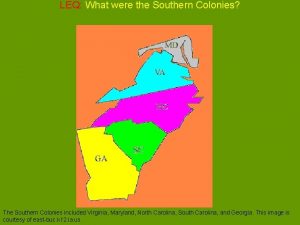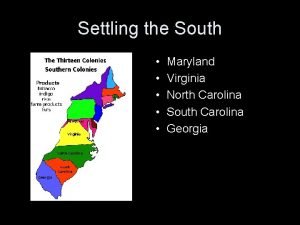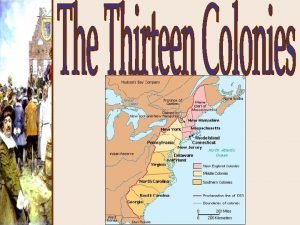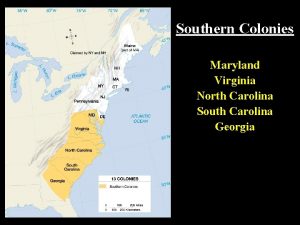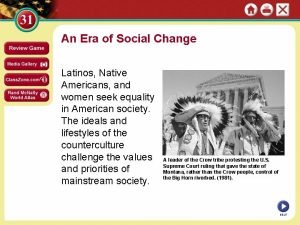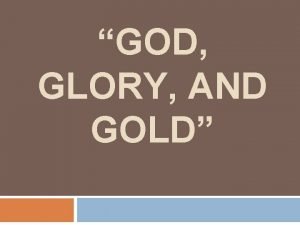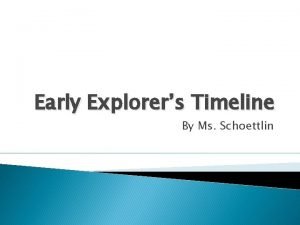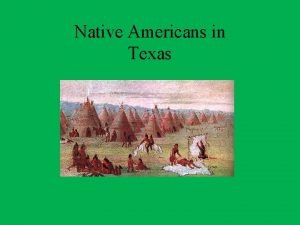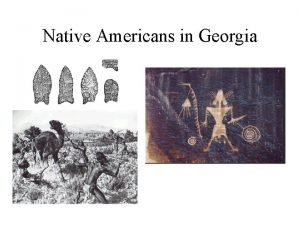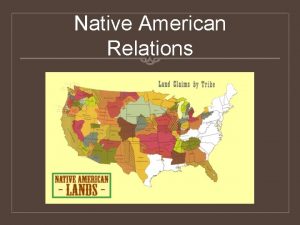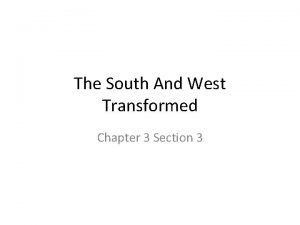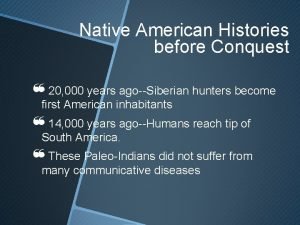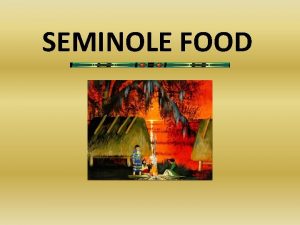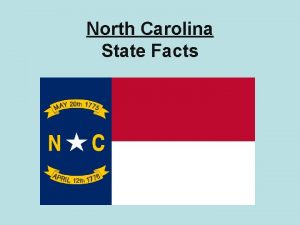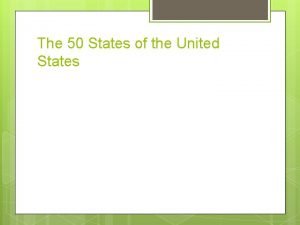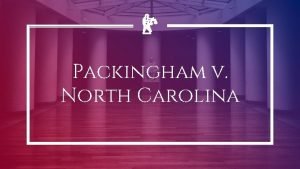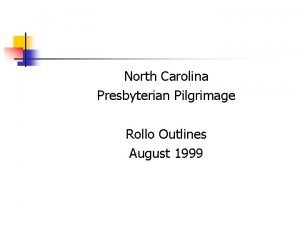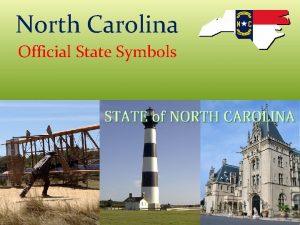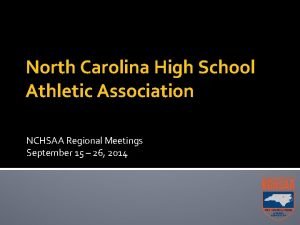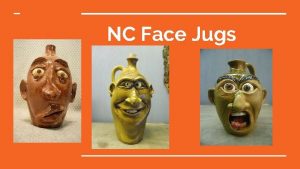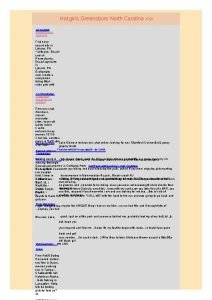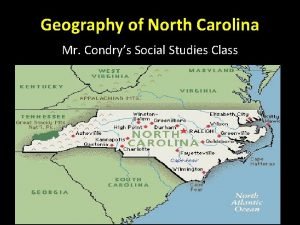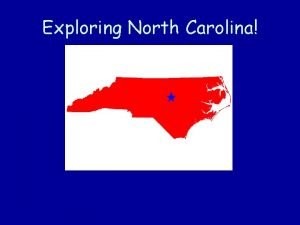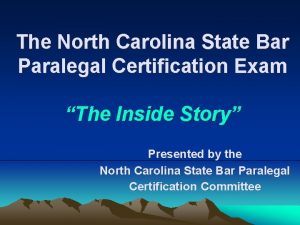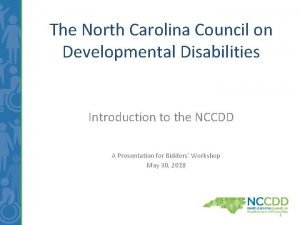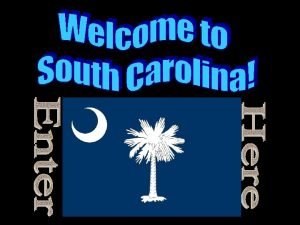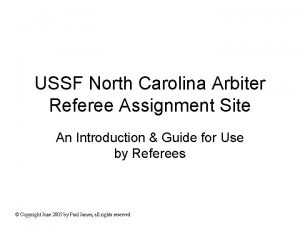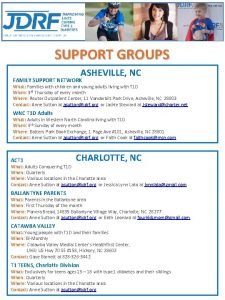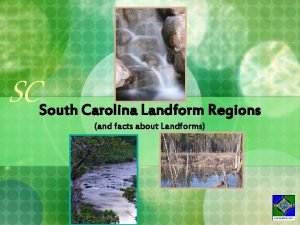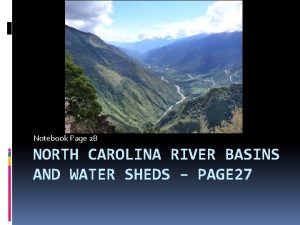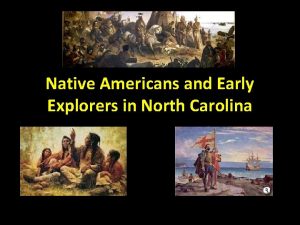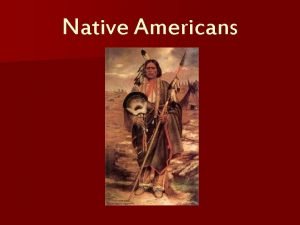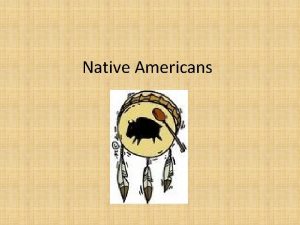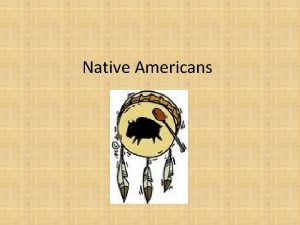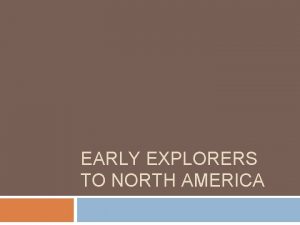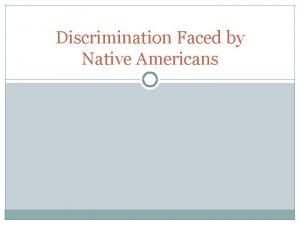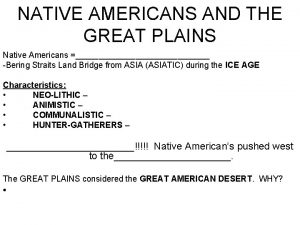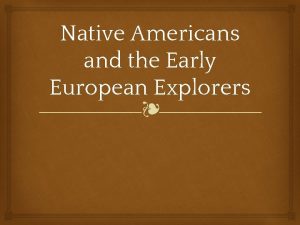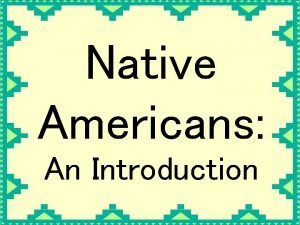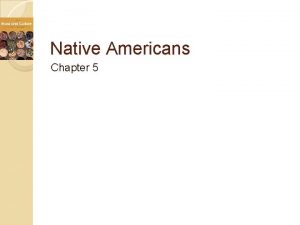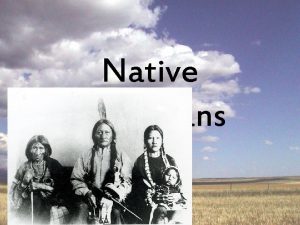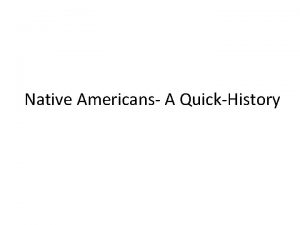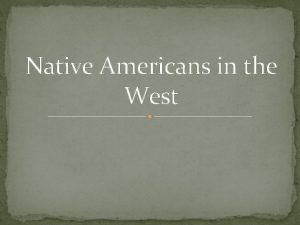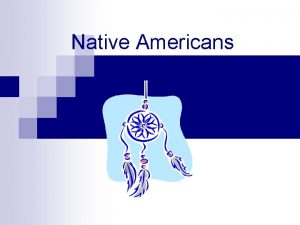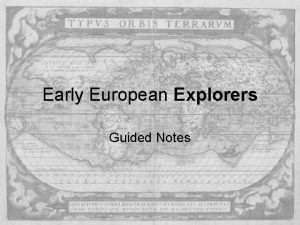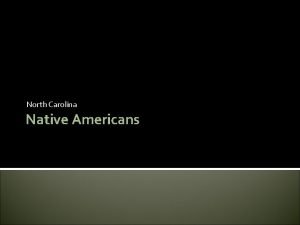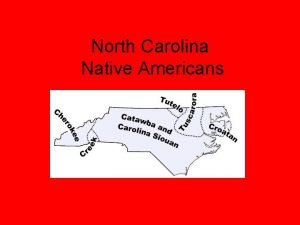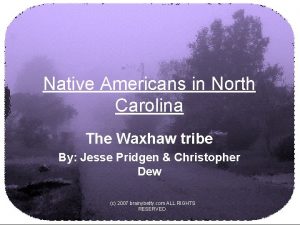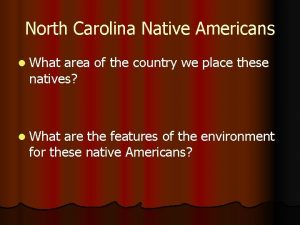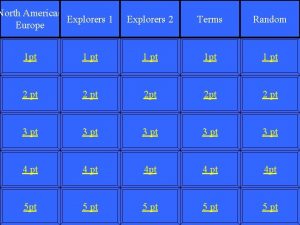Native Americans and Early Explorers in North Carolina






































- Slides: 38

Native Americans and Early Explorers in North Carolina

The First Inhabitants

Paleolithic Period • 10, 000 BC to 7000 BC • The early part of the Stone Age, when early human beings made chipped stone tools, from 750, 000 to 15, 000 years ago.


The Archaic Period • 7000 BC to 500 BC • Characterized by subsistence economies supported through the exploitation of nuts, seeds, and shellfish. • As its ending is defined by the adoption of sedentary farming.

The Woodland Period • 1000 BC to 1000 AD • Continuous development in stone and bone tools, leather crafting, textile manufacture, cultivation, and shelter construction.

The Woodland Period Continued… • Many Woodland peoples used spears and atlatls until the end of the period, when they were replaced by bows and arrows; however Southeastern Woodland peoples used blowguns. • The most cited technological distinction of this period was the widespread use of pottery.

Mississippian Influence • 800 AD to 1500 AD • It was composed of a series of urban settlements and satellite villages liked together by a loose trading network. • the largest city being Cahokia, which is believed to be a major religious center

• 4 Major Tribes in NC – – Croatoan Tuscarora Catawba Cherokee • Native Tribes Regions – – – Northeastern Woodlands Southeastern Woodlands Plains Desert Southwest Pacific Northwest Artic


Algonquin • Language spoken by groups along the coast • The groups included the Chowanoc, the Pasquotank, and the Waccamaw. • Tribes depended on fish, fruits, and vegetables • The paintings of John White of the Lost Colony feature the Algonquin.


The Tuscarora • Lived on the Coastal Plain, along the Neuse and Tar Rivers. • Used hemp to make rope and binding cord. The name means “hemp gatherers. ” • Were connected to the Iroquois nation of New York. • Laced infants to a board to insure correct posture, resulting in well-shaped limbs.

The Catawba • The largest group living in the Piedmont • Known for their burnt-black pottery • Groups moved across the Piedmont, including the Sapona, the Occaneechi • Spoke versions of the Sioux language. • Connected to the Sioux tribes of the Great Plains.

Cherokee • Related to the Iroquois, but had been driven away from their homes. • During the Woodland period, they settled in the mountains. • Controlled 40, 000 square miles when the Europeans arrived.

Cherokee Continued • During the Woodland Period, they numbered 30, 000 inhabitants • Had a 3 class system- upper, middle, and lower • Made baskets of strips of branches from oak trees.

Native American Habits and Beliefs • Woodland culture and customs dominated by the 1500’s. • Villages were built of longhouses or huts. • Clans were connected through the mothers. (matrilineal).

Habits and Beliefs Continued…. . • Tribes were governed by consensus, where most members agreed on decisions. • Nature was respected and was at the center of most beliefs. • Europeans brought animals, plants, and diseases that Native Americans had not seen.



European Explorers Come to North America



Columbian Exchange • the widespread transfer of – – – Animals Plants Culture Human populations Technology ideas • between the American and Afro-Eurasian hemispheres in the 15 th and 16 th centuries, related to European colonization and trade after Christopher Columbus's 1492 voyage.


Northwest Passage • British and French explorers were searching for a Northwest passage to Asia in order to avoid purchasing goods from Italian and Muslim merchants. • Expedition- a journey for a specific purpose. • Elizabeth I authorized two expeditions to search for the Northwest Passage.

Giovanni da Verrazano (1524) • Verrazano was sent by the French to find a shorter water route to China. • He dropped anchor near Cape Hatteras, thinking he had accomplished his task. He thought that the Albemarle Sound was the Pacific Ocean.

Hernando de Soto (1539) • Explored present day Florida, Georgia, South Carolina, and North Carolina (Southeastern US). • He was known for mistreating the native people with whom he interacted.

Juan Pardo (1566) • Explored many of the same areas as de Soto and helped to establish several Spanish settlements in the Carolinas. • Led an expedition that traveled in a northwesterly direction to the foot of the Blue Ridge Mountains from what is now St. Helena Sound on the coast of South Carolina.


Christopher Columbus • An Italian explorer, navigator, and colonizer • Completed four voyages across the Atlantic Ocean

Jaques Cartier • French explorer who founded what is now Canada for France

Amerigo Vespucci • An Italian explorer who America was later named after • Navigator and cartographer who first demonstrated that Brazil and the West Indies did not represent Asia’s Eastern outskirts.

Henry Hudson • Made two attempts on behalf of English merchants to find a Northwest Passage via a route about the Artic Circle.

Leif Erikson • A Viking that founded North America before Columbus

Mercantilism • Belief in the benefits of profitable trading • The economic theory that trade generates wealth and is stimulated by the accumulation of profitable balances, which a government should encourage by means of protectionism.

The reasons behind these expeditions • Greed (gold and world power) • Glory (fame) • God (religion)

Sir Walter Raleigh • English adventurer • Sponsored 3 voyages to Roanoke Island • Colony-a settlement far away from home but ruled by the home country.
 Map of north carolina and south carolina
Map of north carolina and south carolina Maryland virginia north and south carolina and georgia
Maryland virginia north and south carolina and georgia North carolina marschland
North carolina marschland Virginia, maryland, north carolina, south carolina, georgia
Virginia, maryland, north carolina, south carolina, georgia Latinos and native americans seek equality
Latinos and native americans seek equality God glory and gold
God glory and gold Early explorers timeline
Early explorers timeline Where did native americans come from
Where did native americans come from Where did native americans come from
Where did native americans come from How many native americans died on the trail of tears
How many native americans died on the trail of tears What three circumstances hurt native american
What three circumstances hurt native american Native americans
Native americans Traditional seminole indian food
Traditional seminole indian food North carolina state bird
North carolina state bird Nc sunshine law
Nc sunshine law North carolina's state motto
North carolina's state motto North carolina victim assistance network
North carolina victim assistance network Callie zipple
Callie zipple North carolina presbyterian pilgrimage
North carolina presbyterian pilgrimage What is the state shell of north carolina
What is the state shell of north carolina North carolina high school athletic association basketball
North carolina high school athletic association basketball North carolina landmarks
North carolina landmarks Ugly jugs history
Ugly jugs history Local sluts lykens pa
Local sluts lykens pa Geography of north carolina
Geography of north carolina Exploring north carolina
Exploring north carolina University of north carolina hematology oncology fellowship
University of north carolina hematology oncology fellowship University of north carolina chapel hill computer science
University of north carolina chapel hill computer science Nc paralegal certification exam
Nc paralegal certification exam North carolina council on developmental disabilities
North carolina council on developmental disabilities South carolina lighthouses map
South carolina lighthouses map South carolina geographic regions
South carolina geographic regions North carolina digital government summit
North carolina digital government summit North carolina soccer referee
North carolina soccer referee Family support network of north carolina
Family support network of north carolina Sc landforms
Sc landforms How many river basins are in nc
How many river basins are in nc South carolina teacher evaluation system
South carolina teacher evaluation system Nc ocme
Nc ocme
